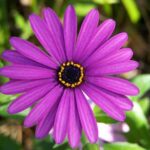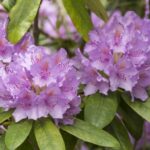This expert rose buying guide will help you choose the right roses for your garden. Learn about the different types of roses available, including tips on buying and identifying types of roses.
You can find roses available in containers throughout the year, but most growers recommend buying and planting roses when they are dormant, in winter or early spring. That’s when you’ll find bare-root roses, which generally cost less and set roots much more quickly, though you won’t be able to see the actual flowers. You will need to plant bare-root roses before the start of the growing season. Container roses can be planted at any time, although it’s best to avoid times of extreme heat or cold.
General Rose Buying Advice
Buying roses available in your local nursery will usually guarantee the plants will do well in your climate (national chain stores tend not to specialize by area in their selections). There are also numerous reputable mail order and Internet suppliers who will have more unusual or hard-to-locate roses.
Old roses, species roses, and miniature roses are almost always grown from their own roots. Modern roses, though, are typically grafted onto a standard rootstock. These are called budded roses. Both grow well. Own-root roses may be a better choice if your plant is killed to the ground by winter frost as budded roses will grow back from the rootstock. The problem can be prevented by proper winter protection (see Caring for Roses).
When buying bare-root roses, look for plants with many thick, green canes, a large cluster of roots, and a strong-looking bud union (the spot on the trunk where the rose was grafted onto the rootstock, generally a swollen bump). Avoid plants with dried out or weak roots and shriveled canes, or ones that are beginning to bloom.
Roses in containers should have strong growth and a firm rootball with no roots protruding from the container. They should also be in at least a 5-gallon container; if not, the roots were probably cut back when the rose was potted and the plant won’t be as strong.
You may also find grades on your roses. For roses that have been grafted onto a rootstock, or budded, the grades are 1, 1 1/2, and 2. Grade 1 roses are the best. Grade 2 roses are often weak. Roses grown on their own stocks, which are generally smaller than budded roses, are graded 3X, 2X, and 1X; look for roses graded 3X.
Labels may indicate that the rose has won an All-America Rose Selections (www.rose.org) award. These roses have been grown in test gardens across the United States by members of AARS, a non-profit organization of growers. The best are given these awards.
Another source for rose information is the American Rose Society (www.ars.org), an educational institution that rates roses after growing them in test gardens. However, not all roses are included, and some roses may not win that do very well in some locations but aren’t ideal for all climates. Use the recommendations as guidelines, but don’t necessarily rule out a rose because it might be ideal for your garden.
How to Identify & Choose Roses
All roses have the same basic needs. But not all roses are the same. Some stand up straight, others tend to be floppier, still others climb or sprawl.
Plant size can range from 2 feet to over 20 feet. Blossom types also vary, with some plants sporting the classic florist’s rose, others a cupped or rosette shape, and still others flat and somewhat sparse petals. The blooms may sit by themselves on a stem or form part of a large cluster of blooms.
Another important difference is the blooming season. Some roses bloom prolifically in spring and then fade to foliage only for the rest of the growing season. Others, known as repeat bloomers, may not be quite as full in the first bloom but will continue to produce flowers throughout the summer into fall.
Finding the type of rose you want means knowing the general characteristics of the different categories of roses and the descriptive terms used for rose blossoms.
Rose blossoms are defined by the number of petals and whether the blossom appears flat, as found on many species roses; is cup-shaped, typical of David Austin roses; or has long, pointed buds that open around a high center, as found on hybrid tea roses and grandifloras.
A single rose has fewer than 12 petals. A semi-double rose has between 12 and 16 petals. A double rose has between 17 and 25 petals. A full rose has between 26 and 40 petals. Very full roses have at least 41 petals, and some may have over 150 petals.
Modern Roses
These are the most commonly available roses. The term refers to any rose that was introduced after 1867, the year that saw the debut of the hybrid tea rose. Today, modern includes everything from ground covers to climbers.
Hybrid teas (shown at right) are the classics of rose garden and florist fame. The plants are stiff and upright, usually between 2 to 6 feet tall. The flowers begin as tight buds with a high, pointed center, and then open up.
Hybrid teas generally bloom throughout the growing season, with a single bloom per stem. Because they have little foliage on the lower part of the plant, gardeners often use low-growing annuals and perennials to fill in the space. There are hundreds of hybrid teas to choose from, but some familiar favorites include Double Delight, Mr. Lincoln, and Peace.
Grandifloras (shown below right) are similar to hybrid teas in appearance, but they are larger, reaching up to 10 feet tall. They also differ from hybrid tea roses in that they tend to produce clusters of flowers at the end of their stems. Queen Elizabeth and Tournament of Roses are perfect examples of grandifloras.
Like grandifloras, floribundas produce clusters of flowers throughout the summer. The plants themselves are smaller, ranging from 2 to 4 feet tall, and the blooms tend to be smaller as well. Iceberg is one of the largest floribundas and is a good choice for along a fence or wall, while French Lace will flourish in a pot. Polyanthas, such as China Doll and Margo Koster, are even smaller, usually no higher than 2 feet tall, with large sprays of small blooms.
Other landscape roses include shrub roses, which include hybrid musk roses such as Cornelia and Kathleen, which do well in partial shade, and the hardy shrub roses, especially the Buck hybrids such as Earth Song and Prairie Sunset, which were developed for the cold winters of the Midwest, Canada, and the Rocky Mountains. Most bloom continually and are disease-resistant. Their growth patterns vary: Some are very upright, others are more lax and leafy, while still others climb.
Other popular roses included in this category are the named or trademarked roses. These are new “families” of roses with specific characteristics. Trademarked roses include the David Austin English roses, such as Abraham Darby and Graham Thomas, which combine modern colors with repeat flowering, old rose form, and strong fragrance
The Generosa roses, including Florence Delattre, are similar to David Austin roses. Other families include the Romantic roses such as Marie Curie that combine contemporary colors with flowers similar to those of hybrid teas, and the Renaissance roses, which resemble floribundas and are strong, disease-resistant, and vigorous bloomers.
Also included in the modern rose grouping are those plants bred for a specific purpose. These include the climbers (shown below right), which have naturally long and sturdy canes that can be attached to a support. Some are natural climbers, such as Blaze and Joseph’s Coat, which generally have larger blooms.
Other climbers are genetic offshoots of bush roses, such as Climbing Cecile Brunner and Climbing Iceberg, and have the same blooms as their parents.
Ground cover roses have been bred to grow only 2 to 2 1/2 feet high while sprawling from 3 1/2 feet to 6 feet or more. They are generally hardy, with profuse blooms from spring until fall. The Flower Carpet and the Meidiland series are probably the best-known ground cover roses.
Miniature roses are tiny (1- to 1 1/2-feet) versions of their hybrid tea or floribunda parents. They’re ideal outside in containers, rock gardens, and at the front of borders, and they also do well indoors. Their names–such as Child’s Play and Cupcake–often indicate their small size. An offshoot of these are the minis, tiny roses in 2- to 4-inch pots that are sold in bloom. Even these, though, can be successfully transplanted to the outdoors, though they’ll never be big.
Old Roses
Old roses are officially those introduced before 1867, but a few new, related varieties also have found their way into this category. Old roses run the gamut from shrubs to climbers and vary in their resistance to disease and tolerance of cold. Most flower in spring only, but they’re all noted for their strong, sweet fragrance.
Among the most famous old roses are the Alba roses, descended from the rose symbol for the House of York in England. Other familiar old roses include the cabbage roses (centifolia), China roses (shown at right), and damask roses, which are used to make perfume.
The original tea roses are old roses. Bourbon roses; hybrid perpetual roses; moss roses, noisette roses, and Portland roses fall into this category.
Species Roses & Wild Rose Hybrids
These are the wild roses–very old roses that have grown naturally long before any breeding programs began–and their decendents. Species roses include both shrubs roses and climbers; many are both strong growers and cold-hardy.
Some of the more readily available species roses are R. banksiae, the Lady Banks’ rose, a popular climber that can reach 20 feet or more and is disease-resistant; R. eglanteria, known as sweet briar or eglantine and noted for its fragrance of green apples; R. x harisonii, Harrison’s yellow rose, a deciduous shrub that was planted in California’s Gold Country and can still be found there today; and R. rugosa, a fragrant bloomer with distinctive hips that is very tough and hardy. Rugosa roses are often used to prevent erosion on slopes.



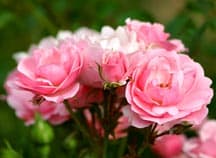
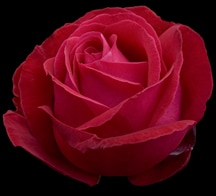
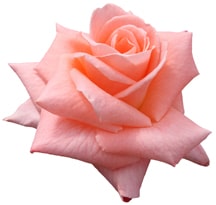
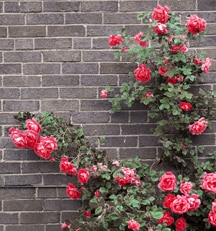
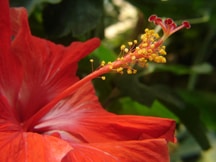
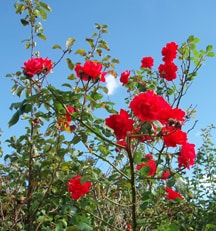



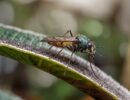
 Don Vandervort writes or edits every article at HomeTips. Don has:
Don Vandervort writes or edits every article at HomeTips. Don has:

